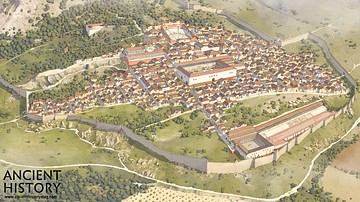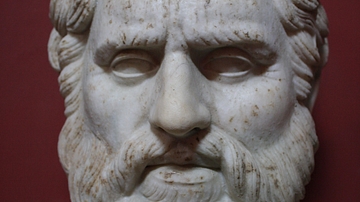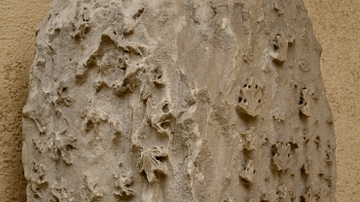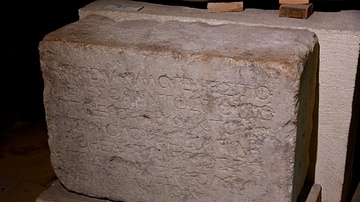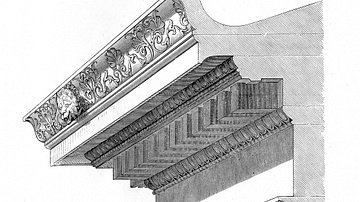Illustration
Marble wall block from the temple of Athena Polias at Priene, inscribed with the name of Alexander the Great, c. 334-330 BCE.
The British Museum, London.
Around 340 BCE, the inhabitants of Priene were laying out their new city, terraced onto the slope of Mt. Mykale. In 334 BCE, when Alexander reached Priene, the new temple of Athena Polias, goddess of the city, was still under construction. Alexander left funds for the completion of the building, which was designed by the architect Pythos, one of the architects of the Mausoleum at Halicarnassus. In return, Alexander's name was inscribed on the anta of the temple. The inscription may be translated as "King Alexander dedicated the temple of Athena Polias".
About the Author
Cite This Work
APA Style
Amin, O. S. M. (2016, May 29). Wall Block Inscribed with the Name of Alexander the Great. World History Encyclopedia. Retrieved from https://www.worldhistory.org/image/5069/wall-block-inscribed-with-the-name-of-alexander-th/
Chicago Style
Amin, Osama Shukir Muhammed. "Wall Block Inscribed with the Name of Alexander the Great." World History Encyclopedia. Last modified May 29, 2016. https://www.worldhistory.org/image/5069/wall-block-inscribed-with-the-name-of-alexander-th/.
MLA Style
Amin, Osama Shukir Muhammed. "Wall Block Inscribed with the Name of Alexander the Great." World History Encyclopedia. World History Encyclopedia, 29 May 2016. Web. 16 Apr 2025.



